한국에서 온 덴마크 사람들
THE DANES FROM KOREA
Feeling the real sense of kinship between the people of Denmark and Korea
RAISING AWARENESS REGARDING THE HISTORY OF KOREAN ADOPTION TO DENMARK
EXHIBITION PROJECT BY Project Y
# 0. E X H I B I T I O N P R O P O S A L
_
OCT. 2018.
한국에서 온 덴마크 사람들
THE DANES FROM KOREA
Feeling the real sense of kinship between the people of Denmark and Korea
- by Project Y -
_
# 1. A B S T R A C T
- This exhibition will deal with the Korean-born adoptees’ stories and most of all the adoptees themselves, who have been placed in Denmark. Taking statistics as the point of departure, the exhibition will contain the history of Korean overseas adoption, the daily life and the story of Korean-born adoptees in Denmark, and present artworks of Danish Korean-born artists who are living in Denmark.
- The primary goal of the exhibition is to present ‘adoptee’ without any bias. Exploring the Korean-born adoptees in Denmark shows the cultural story that can examine the value of Danes and their real life further the shallow knowledge of Denmark. The exhibition tries to close the distance between culture of Korea and Denmark through to approach their private stories in a friendly way.
- Moreover, the purpose of this exhibition is to raise awareness in the Korean public of the history of Korean overseas adoption. This topic has been unable to attain widespread publicity since it is both politically and ethically controversial. However, the aim of this exhibition is not to judge - neither to condemn nor glorify. It will merely serve as an attempt to restore into Korea’s public consciousness this hidden and forgotten part of history and to encourage acceptance of the circumstances that brought us to where we are today.
# 2. BRIEF HISTORY OF KOREAN ADOPTION
- In the 1950’s after the Korean war, Korean overseas adoption started in accordance with S.M. Lee’s government idea of ‘Ilguk-Ilmin’ (One country, one ethnicity), which discriminated against mixed-race children. The law of ‘Proxy adoption’ (A method of adoption which gives the authority over the adoption process to the adoption agency instead of the adoptive parents, who will not even have to travel to the adoptee’s country of origin) was ratified and the organization Holt International Children’s Services was founded in 1953. Furthermore, the 1960’s showed a rapid increase year in Korean adoptions overseas. The year 1985 marked the high point of Korean-born adoptees sent abroad with 8,500 adoptions and an estimated 200,000 Korean-born children were adopted to foreign countries between 1953 the end of The Korean War and 2017.
- The main reasons for the Korean overseas adoption were overflowing orphanages, poverty and the negative perception of single mothers in Korean society. Furthermore, during the 1970’s, J. H. Park’s government encouraged overseas adoption as a business opportunity in order to earn foreign currency. Consequently, cases arose in which children, who were put in the temporary care of a consignment organization by poverty-stricken parents or who had become lost from their parents, had their designation changed and subsequently adopted abroad without their parents’ consent.
- Inconsistencies of the records
Furthermore, there are large inconsistencies in the recorded numbers within Korea. The numerous errors, omissions or even fabrications in the adoptees’ personal data means that, even today, it can be difficult or impossible for adoptees to trace their roots.
- Around 8,800 Korean-born adoptees were sent to Denmark
Generally speaking, Koreans are not very familiar with the geography and culture of Denmark. Knowledge about Denmark is typically limited to simple facts, such as Denmark being the most well-known welfare state as well as being the origin of Scandinavian design, which influenced both home interior, decoration and furniture. In spite of this, around 8,800 Korean-born adoptees were sent to Denmark on the other side of the globe from 1965 to 2017. The number of Korean-born adoptees in
Denmark is the fourth highest figure after the USA (110,000), France (11,000) and Sweden (9,000).
- The Korean-born adoptees have been being a bridge between Korea and Denmark. Many of Korean adoptees have visited Korea several times in order to find their biological parents, to learn Korean, to participate in volunteering organizations that helps adoptees to visit Korea at the first. They introduce Korean language, culture, cuisine to Denmark society after they visit Korea. In addition, when some of them are moving to Korea temporary or permanently, they introduce back to Korea about Danish culture. They become the strongest cultural tie between two countries.

< REFERENCE. >
- JeonHong, GiHye. The series of “65 Years Korean Overseas Adoption”. 2017. www.pressian.com.
- Lee, Kyungeun. International Legal Protection of the Rights of the Child in Intercountry Adoption. 2017. Dcollection.
- South Korean Ministry for Health, Welfare and Family Affairs(2009)
# 3. P U R P O S E
O F T H E E X H I B I T I O N
- Examined and meditated by the artworks
Through the selected artworks of Danish professional artists adopted from Korea, their experiences are examined and mediated. The selected artworks have been chosen as reference points, moments of reflection over identity and culture. These reflections will be combined with history and statistics as well as photos portraying the everyday life of adoptees living in Denmark.
- Understanding of kinship
All the adoptees portrayed in the exhibition bring their own personal understanding of kindship. Some adoptees live in more traditional family units with their children, while others are single parents or live with new partners and their children something not uncommon in Danish society. They are Adoptees that have a kinship relation in Denmark as well as in Korea, where they have rediscovered their birth families.
- Informed and to help the adoptees’ complexities of the adoption
Through this exhibition, we wish for Korean people and Korean adoptees from other parts of the world to become more informed and to help them understand some of the complexities of Danish-Korean adoption. Also, we wish to explore a variety of experience and introduce Danish culture.
- Artworks displayed will be combined with the following sections to give context and background information to the audiences allowing them different points of access.
Section 1. History of Korean adoption
Section 2. Life of The Danes
Section 3. Identity of The Danes
- We hope to introduce the Korean public to our joint history of Danish-Korean overseas adoption. We will make this journey as personal and complex an experience as the artworks are, hoping the exhibition will have the power to show disconnect but also enable connection to other people, friends and family. We believe this will generate more interest in Danish culture and this special Danish-Korean connection and help bring to light the Danish-Korean adoption history.


The Apology, Jette Hye Jin Mortensen
The Return, Malene Choi Jensen
# 4. D E T A I L O F T H E E X H I B I T I O N
SECTION 1 .
History of Korean overseas adoption
Infographic of The Adoption History
The first section of the exhibition tells the history and shows the statistics of Korean overseas adoption using infographics and documents. It will also describe the process of adoption by using examples of personal documents of adoptees, articles of media.
- Infographics
1/ The number of adoptees
2/ The cause for adoption
3/ Receiving Countries of South Korean Adoptees
4/ Time Line of History of Korean overseas adoption
Documents and Articles
5/ Official adoption documents, Collected articles and photographies of media
Publication
6/ Books related to Korean adoption
#4. DETAIL OF THE EXHIBITION
SECTION 1 .
History of Korean
overseas adoption
1/ The number of adoptees

2/ Receiving Countries of South Korean Adoptees

3/ The cause for adoption

#4. DETAIL OF THE EXHIBITION
SECTION 1 .
History of Korean
overseas adoption
5/ Documents and Articles
#4. DETAIL OF THE EXHIBITION
SECTION 1 .
History of Korean
overseas adoption
6/ Publication

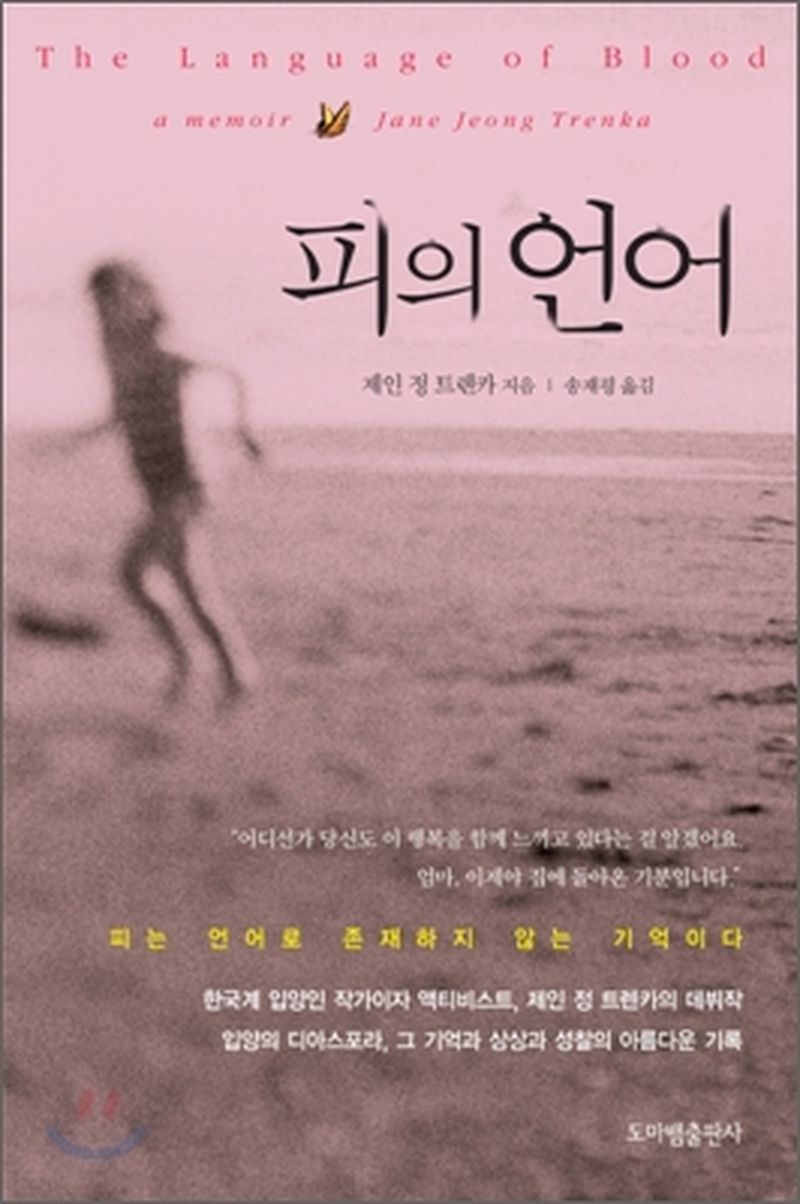




# 4. D E T A I L O F T H E E X H I B I T I O N
SECTION 2 .
Life of the Danes
Records of Danish-Korean Adoptees
The second section displays the Korean-born adoptees’ stories of their lives and identities with their Danish adoptive families. Furthermore, Danish style decoration and architectural sequence will be utilized to present a Danish atmosphere to immerse viewers into the artworks. This composition can lead the audience to feel familiar and friendly with the adoptees.
- Photography
1/ How we grow up in Denmark
2/ The Danes
3/ My body, My History
Home video
4/ Malene’s Denmark birthday
Publication
5/ Ch’ingu
Installation
6/ 200,000 Korean-born adoptees
7/ The Danish Living Room
# 4. DETAIL OF THE EXHIBITION
SECTION 2 .
Life of the Danes
1/ How we grow up in Denmark
The photography about routines and lives of Korean-born adoptees with their danish families, class mates, colleagues. It will display approximately 500 photos that how they grow up as danes in the danish society.
# 4. DETAIL OF THE EXHIBITION
SECTION 2 .
Life of the Danes
2/ The Danes-Stories of Korea adoptees in Denmark, Photography, 2018 Rollence Patugan
If the adoptees’ identity is stripped from them via racism, xenophobia, or ignorance, then what is left for these Danes to identify with? Do they feel like outsiders in their own country? How do they navigate within their own society and culture that may treat them as less Danish? In this series, “The Danes” attempt to open up these discussions of nationalism and cultural identity through the stories of these Korean adoptees. http://thedanes.photo
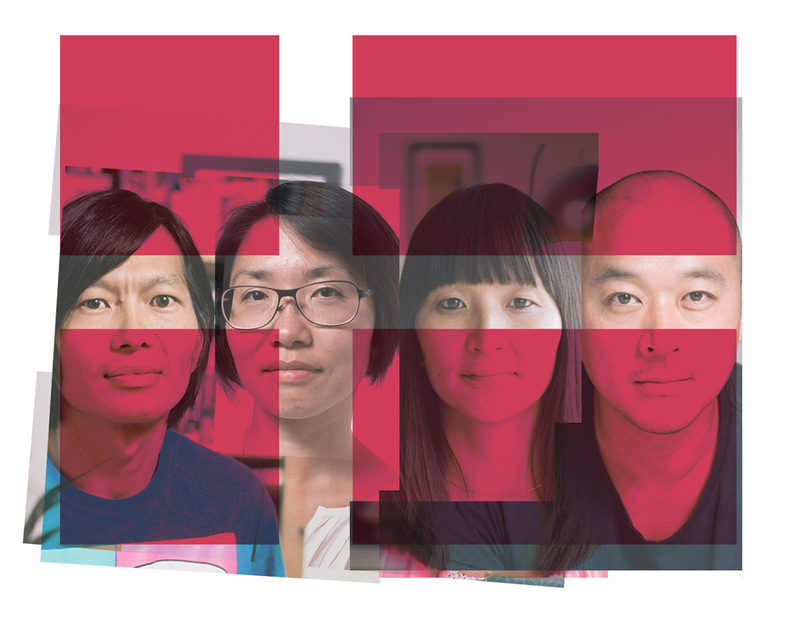
“ Nine years ago I became a mother,
and I started thinking more about my biological origins.
My daughter looks like me and we think alike. But who do I look like?
I hope that one day, I will be able to travel back to Korea.
Not necessarily to find my biological family, but to find out more about
the country in which I was born "
- Excerpt by the interview of Louise -
© Rollence Patugan

Previous exhibition at Art Share LA’s Perimeter VI Show Oct .6. 2018. © Rollence Patugan

Rollence Patugan, American Commoercial and fine-art photographer
Rollence wants his work to reflect the ethnic diversity that has always been a part of his experiences and reality that often times he does not see being represented in popular media such as print, television, and cinema. He starts with simple ideas and builds layers incrementally from there. “We are all different, and I love photographing that.” Rollence uses traditional medium format color film to capture the photographs for this ongoing series. http://www.4thwallphotography.com
# 4. DETAIL OF THE EXHIBITION
SECTION 2 .
Life of the Danes
3/ My body, My history, Magazine Ch’ingu by Korea Klubben
These photographs of adoptees have been selected as one artwork dealing with self-expression and identity through the use of tattoos. Behind every tattoo is a personal story of how an adoptee has chosen to comment on the situation. It is a visual and contemporary way of implementing part of one’s history directly on the surface of your skin. But it is also a more permanent mark and commitment that affects the appearance and underlines the connection to Korea. It is almost like old fashion branding showing the world where one belongs. A connection many Korean adoptees have had to elaborate on because of their different look, form the white majority in Denmark. Therefore, it is both interesting and important to show how some adoptees choose to respond to this question about belonging and connection in the most visual and permanent way.
# 4. DETAIL OF THE EXHIBITION
SECTION 2 .
Life of the Danes
4/ Malene’s Denmark birthday, Home video, 1988, Malene Sun Kim Friis
Home video of the arrival of Malene at her adoptive family’s home in Denmark and the celebration of her new Danish birthday day in 2nd of June, 1988.
© 2019. .Malene Sun Kim Friis. ALL RIGHTS RESERVED
# 4. DETAIL OF THE EXHIBITION
SECTION 2 .
Life of the Danes
5/ Magazine Ch’ingu, 1996-2008, Korea Klubben
Every year the Chingu Magazine is published by KOREA KLUBBEN in an edition of 600 copies. It is a specialized magazine dealing with various issues related to adoption, Danish-Korean culture and other experiences and events that are relevant to the Korean adoption community. The magazine is first and foremost dedicated to Korean adoptees growing up in Denmark by bringing up various issues about identity and how different adoptees have dealt or are dealing with these in their everyday life. The magazine helps bring a sense of connection and visual identity to the members of Korea Klubben by featuring Korean adoptees, something still not seen often enough in Danish mainstream media. https://koreaklubben.dk

# 4. D E T A I L O F T H E E X H I B I T I O N
SECTION 3 .
Identity
of the Danes
Contemporary Artworks of Danish-Korean Adoptees
The third section is about the identity as an adoptee from Korea. It will consist of various art pieces by Danish professional artists who were adopted from Korea. The artworks should help to articulate the identities of Danes, Koreans and adoptees.
*Currently in the middle of discussing the specific artworks
- Installation
1/ The Apology
2/ We Forget and We Die All Over Again
Documentary Film
3/ The Return
Literature
4/ SHE IS ANGRY – A testimony of transnational adoption
Photography
5/ Asian Male Photo Project
6/ Identity
#4. DETAIL OF THE EXHIBITION
SECTION 3 .
Identity
of the Danes
1/ The Apology, Installation, 2013, Jette Hye Jin Mortensen
This artwork deals with epigenetics and inherited biochemical traces of trauma that we carry from our ancestors. It contains artistic methods, experiments, colours and materials that might be capable of subverting and healing these bodily traumas. © Jette Hye Jin Mortensen https://www.jettehyejinmortensen.com
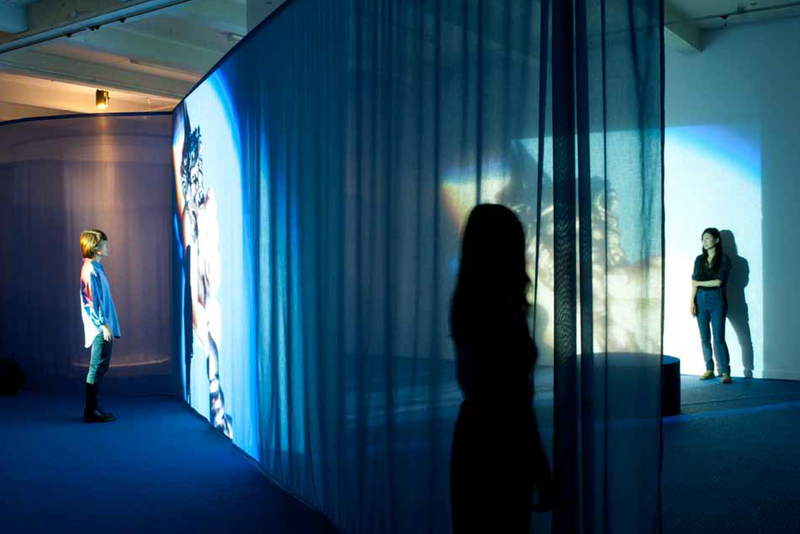

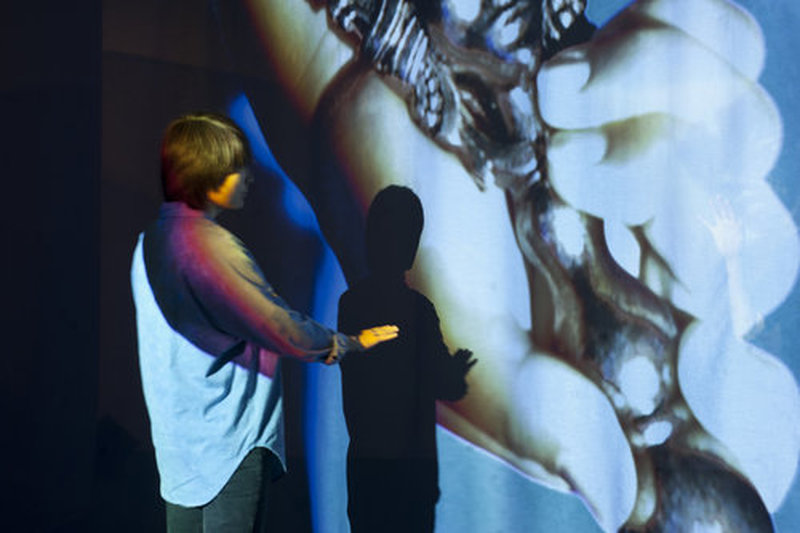
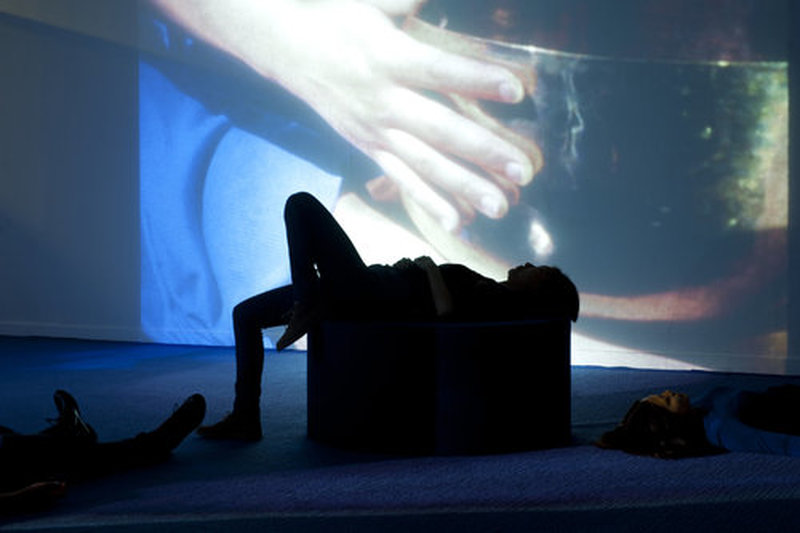
# 4. DETAIL OF THE EXHIBITION
SECTION 3 .
Identity
of the Danes
2/ We Forget and We Die All Over Again, Installation, 2017, Jette Hye Jin Mortensen
This artwork gives a significantly unique insight into who we are and how we were formed by thousands of years of history
of, for example, war and famine. At the top of the work is an American parachute of WWII, capable of both liberation or
invasion. In a cross section of human history, the wars referred to by the parachute can be perceived as an uncontrollable
fire that flows through our DNA.
© Jette Hye Jin Mortensen https://www.jettehyejinmortensen.com
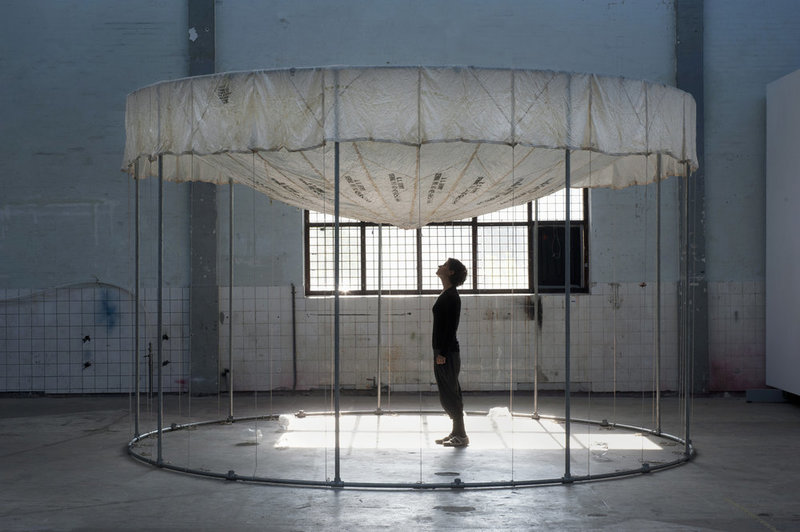



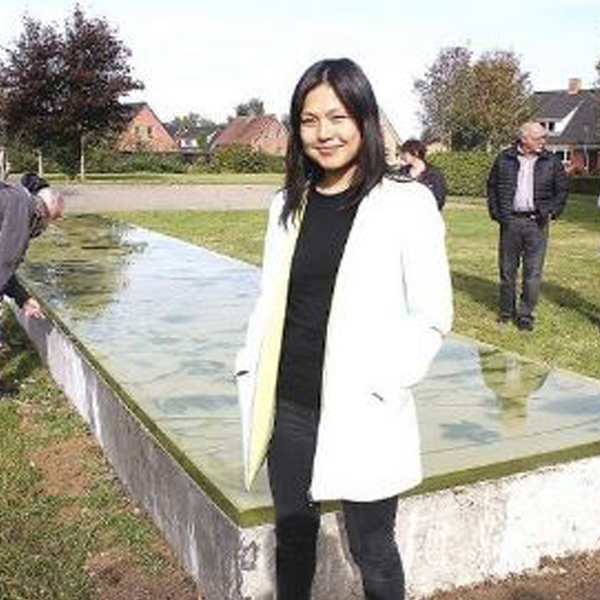
Jette Hye Jin Mortensen, Visual artist
Hye Jin Mortensen graduated from The Royal Danish Academy of Fine Arts and has a background in music and experimental theater. She creates visual productions involving fluid choreography and narratives characterized by poetic and meditative moods. Her practice is an experimental weaving of cultural, scientific, performative, meditative and architectural fields in developing spacious, intergenerational and elastic ways to understand emotional relationships. https://www.jetterhyejinmortensen.com
# 4. DETAIL OF THE EXHIBITION
SECTION 3 .
Identity
of the Danes
3/ THE RETURN 회귀, Hybrid (fiction/documentary) feature, 90 min, 2017, Malene Choi Jensen
“Two Danish-Korean adoptees visit their Motherland for the first time
and are confronted with their own identity struggles.”
Two Danish-Korean adoptees return for the first time to the country where they were born. Intrigued by the spirit of their
motherland and confronted with the personal stories of the fellow adoptees they meet in Seoul, Karoline and Thomas are
hurled into an emotionally disorienting journey that forces them both to question their own destiny and identity. Operating
in a hybrid field, THE RETURN is partially based on director Malene Choi’s personal experience and on stories shared by
adoptees that Malene encountered in Seoul while shooting the film.
Festivals / Awards
Jeonju IFF, South Korea – Special Jury Prize; Diaspora IFF, South Korea / International Film Festival Rotterdam, Netherlands – Bright Future Award – Special Mention – World Premiere / Göteborg Film Festival, Sweden – FIPRESCI Award – Special Mention / Vilnius IFF ‘Kino pavasaris’, Lithuania – Competition of European Debuts /
CPH:DOX, Denmark / Hot Docs, Canada / Film Fest Sundsvall, Sweden – Nordic Mid Competition / Flying Broom IFF, Turkey / Seattle IFF, USA – Documentary Competition / Edinburgh IFF, UK / Valetta FF, Spain / Brussels IFF, Belgium – European Jury Prize / New York Asian FF, USA / New Horizons IFF, Poland – New Horizons International Competition / Taoyuan FF, Taiwan
© 2019. Pluto Films http://www.plutofilm.de/films/the-return/0031


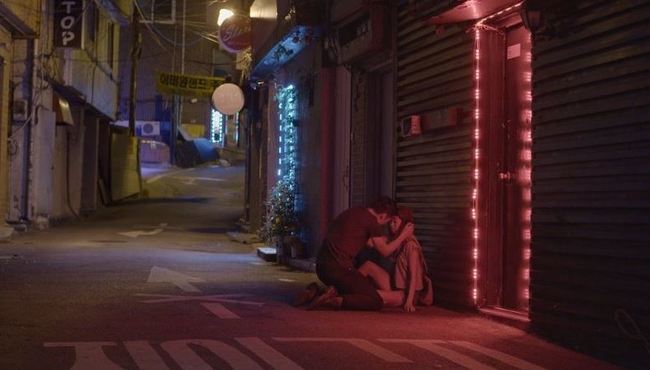


Malene Choi Jensen, Documentary Video artist
THERETURN is Malene Choi's feature debut. Her short films have been selected for e.g. Hot Docs, Göteborg Film Festival, Nordic Panorama and Venice International Short Film Festival. Malene Choi graduated from the National Film School of Denmark’s documentary programme in 2005. https://www.facebook.com/malene.choi
# 4. DETAIL OF THE EXHIBITION
SECTION 3 .
Identity
of the Danes
4/ SHE IS ANGRY – A testimony of transnational adoption, Liturature, 2014, Maja Lee Langvad
The book tells a critical story about transnational adoption. Rooted in personal experiences, SHE IS ANGRY depicts a portrait of an adoptee and an adoptee community in South Korea. The book touches on themes such as kinship, racism, gender, and global inequality. A deeply personal and political account it can be read as a long poem, a testimony, and documentation about the adoption industry. It will display with the English excerpt.
© Maja Lee Langvad http://www.leelangvad.dk/hun-er-vred


Maja Lee Langvad, Writer
Maja Lee Langvad is a writer who currently lives in Copenhagen. Her debut collection of writings Find Holger Danske, (“Finding Holger Dane”) was published in 2006. Her books explore themes such as adoption, national identity, racism, and the act of writing. She has translated Fragebogen, (”Questionnaires”) by the Swiss author Max Frisch into Danish, and she is the
co-editor of the Nordic literary magazine Kritiker. http://www.leelangvad.dk/
# 4. DETAIL OF THE EXHIBITION
SECTION 3 .
Identity
of the Danes
5/ Asian Men Project, Photography, Mai Young Ovilsen
The photo project started back in 2015, when an american project with famous Asian-american actors and models came out. The Asian man is always portrayed as the business man, the nerd or the friend, but never as the lover or leading male in american media. Media representation matters. It is important that people can mirror themselves in an attractive and positive self image to promote self worth and a sense of being proud of who you are. In Danish media, Asian representation is almost non-existing. Therefore Mai made her own. This is a group of Danish Korean adopted guys who never did a photo shoot before. As a female photographer, it also changed her own look at herself. After 100th of clicks with the camera, she started to discover signs of beauty in her own looks, because she was forced to sharpen her own eye for details of attractiveness in all her fellow Asian male friends. So the project emphasize that the value of male and female attractiveness - which really comes from being happy with yourself and the way you look - has no gender.
© Mai Young Ovilsen

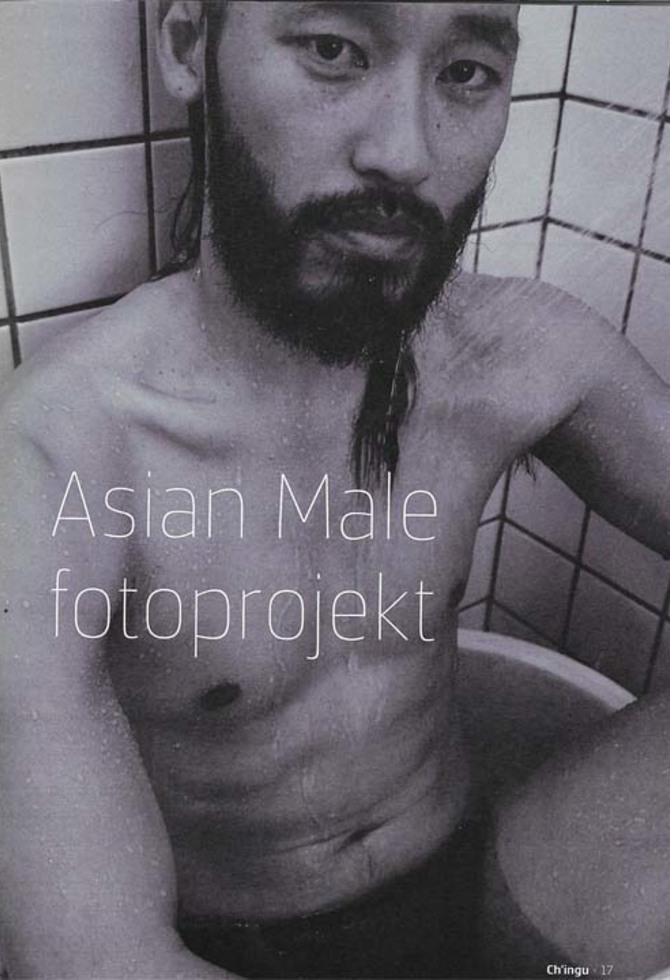
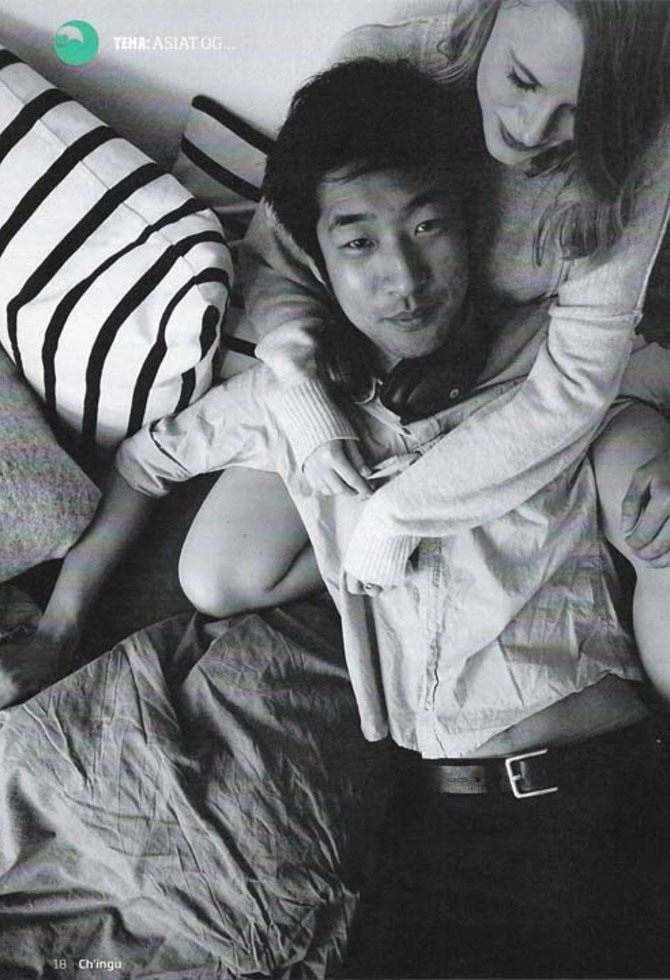





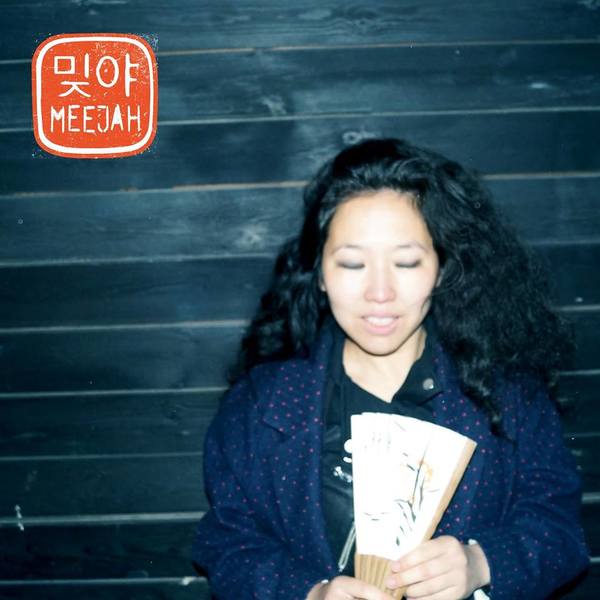
Mai Young Ovilsen, Musician, Photographer
Her music band Meejah is signed at the Faroese record label Tútl Records. She uses her music and pictures to explore themes like representation, atonement of loss, transnational
identity and cultural equality. She has played in Reykjavik, Denmark, Faroe Islands, New York and South Korea. https://www.facebook.com/maiovlisen

Charlotte Kim Boed, Photographer
Charlotte graduated with a degree in art history from the University of Copenhagen and has a background in commercial and art photography. She creates catchy portraits and illustrations of public person in culture society, where art often has made its appearance. Her portraits and illustrations are often considered as cinematicaly staged, where time and space are abolished. In particular, she experiments with moods, colors and the light in the images. www.ckboed.dk
June Jin Engelharth, Fine artist
June Jin graduated from the College of visual art & design in the year 2000 in Denmark. Her medium of expression is, oil on canvas, oil on Plexiglas & photography and a combination of these materials. Her paintings are fusions between the old masters like Rembrandt van Rijn and modern design. The use of Plexiglas has become a trademark for June Jin and is her way of bringing the techniques of the great old masters up to date for the modern audience. She also creates art projects with socially relevant subjects, performed as interactive events & street art. www.junejin.com
# 5. M A I N P A R T N E R
-

The biggest Korean-born adoptee's asscociation in Denmark
Korea Klubben is one of the oldest and most well-established adoptee associations in the world.
It dedicated to strengthening and creating community between Korean adoptees, facilitating access to post-adoption resources and providing a variety of social events and relevant workshops for members.
Korea Klubben was founded in 1990, and it is the one of the founding associations of IKAA (International Korean Adoptee Associations) an international network of associations for Korean adoptees which bridges cultures and nationalities and facilitates personal and social networking among the global Korean adoptee community.
Korea Klubben is committed to facilitate contact among Korean-born adoptees and we promote cultural exchange between Denmark and Korea. We arrange a large number of social, cultural and adoption related activities every year including magazine publication, adoption related workshops,sports, monthly dinners/member meetings, cooking classes and other cultural events. In 1996, Korea Klubben’s Ch’ingu Magazine was launched and has been published and sent to its members every year since.
ⓒ Jes Eriksen https://koreaklubben.dk


"House of hospitality" for overseas Korean adoptees
KoRoot has been blessed to be able to lend a small helping hand to returning overseas adoptees since 2002, when it welcomed four overseas adoptees as its first guests. KoRoot is a guesthouse for returning overseas Korean adoptees, with its foundation in the heart of hospitality. It is also an NGO trying to find appropriate perspectives on domestic and intercountry adoption discourses.
KoRoot would like to be a “house of hospitality” for overseas Korean adoptees who have been scattered around the world. They hope that adoptees will have many opportunities to experience Korean society and culture while staying at KoRoot, as well as find their relationships with their birth country. In addition, KoRoot would like to challenge Korean society to become a “house of hospitality” for all children born in Korea. KoRoot dreams of a society in which mothers and children have the right to live together and receive support and encouragement, regardless of their social status, and adoption is not viewed as the first,
inevitable solution.
ⓒ KOROOT http://www.koroot.org



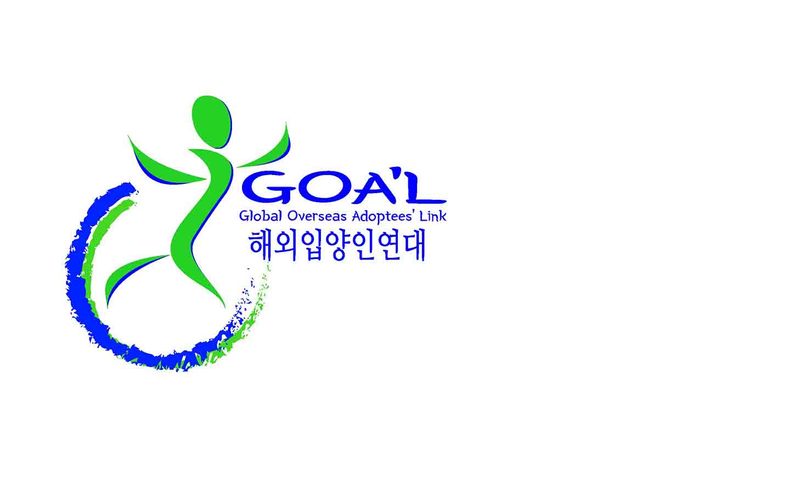
Our vision is to be the premiere authority on adoptee matters,
Our mission is to be an adoptee-centric hub connecting adoptees worldwide.
In 1997, Ami Nafzger, a Korean American adoptee, founded Global Overseas Adoptees’ Link as the only adoptee-led non-profit and NGO in Korea. The following year, twelve adoptees in Seoul gathered for the first ever formal meeting. The year 1999 brought the first G.O.A.’L conference which continued for many years. Today, hundreds of adoptees live in Korea. G.O.A.’L’s mission first and foremost is to serve the Korean adoptee community— those living here and those abroad.
G.O.A.’L was created with the purpose “To provide a resource center for OAK(Oversease Adopted Korean)s returning to Korea, help them when needed. To have a network link in Korea and to be a link for all Overseas adoption organizations already existing overseas. To resolve legal issues and teach the Korean society who OAKs are. ” They are committed to sustainability and providing the highest level of services based on informed adoptees’ experiences and knowledge. ⓒ G.O.A.' L https://www.goal.or.kr


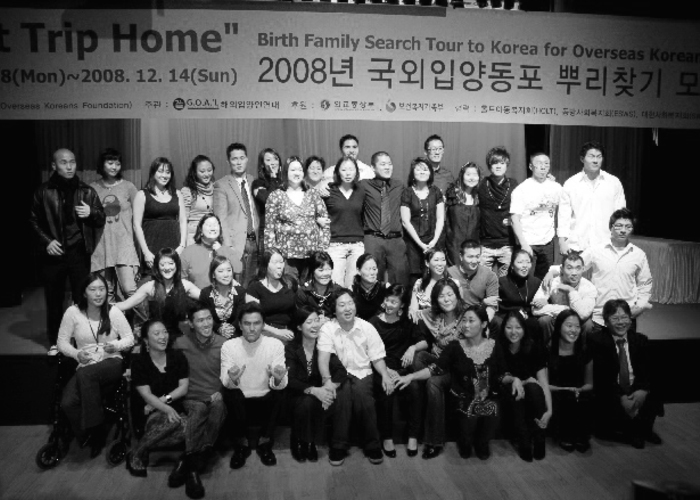
# 6. Project Y
Project Y was founded in 2018 in Denmark for raising awareness regarding the Korean overseas adoption to Denmark. It demands a nuetral way to describe adoption issue, therefore, we determine making as an art exhibition "The Danes from Korea; Feeling the real sense of kinship between the people of Denmark and Korea". We all love art and culture and anchoring their root in either Korea and Denmark. We believe our passion for this project will lead a better understanding of Korean-born adoptees in Denmark as well as overseas adoption in the world.

Yejin Jesine Hong

Director & Project Manager
yejingreen@gmail.com
yejinjesine.creatorlink.com

Louise Hedegård Madsen

Curator & Project Manager
lhm.louisehedegaardmadsen@gmail.com
www.louisemadsen.com

Joo Yeon Park

Curator
joo_yijoon@naver.com

Mai Young Øvilsen

Communication &
Collaboration Consultant
maiovlisen@gmail.com

